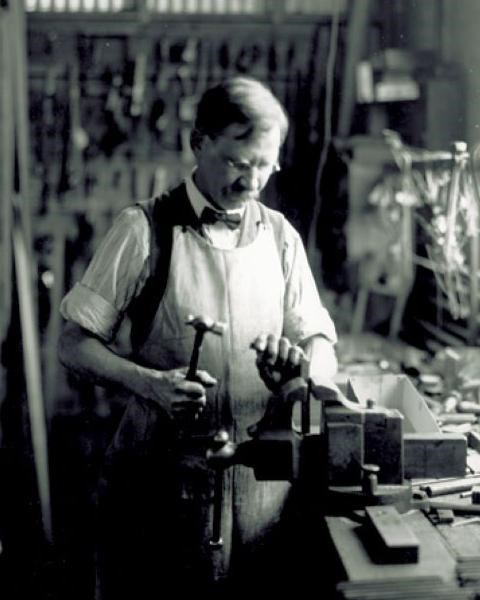
(Courtesy State University Archives)
The Wright Brothers didn’t do it alone.
Their sister, Katharine Wright, was an essential part of the team. She ran the brothers’ bicycle shop when they were off doing gliding tests in Kitty Hawk. And she was essential when it came to taking care of the Wright Brothers’ business and social matters.
And, without Charles E. Taylor, the Wright Brothers’ planes would have never gotten off the ground.
Taylor, a self-taught machinist, worked as a repair person in the bicycle shop. And it was Taylor who Orville and Wilbur turned to when they needed a wind tunnel to help them with improvements for the 1902 glider.
It was also Taylor who designed and built the first successful airplane engine for the Wright Brother’s first pioneering powered flight in 1903. And it was Taylor who improved and fixed the engines for many years after.
Thanks to this story in the Metropolitan Airport News, we learned all about Charles E. Taylor. And about a short film that highlights his mostly forgotten role in aviation history and in the Wright Brothers’ story.
See the film, by Joshua Lang and Natalie Wong, below. Be sure to watch for the rare footage of Taylor describing how he created parts from scratch.
(Charlie Taylor at the Wright Company factory in 1911. Courtesy Wright State University Archives)





